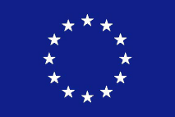| [ report an error in this record ] | basket (1): add | show |
 |
| one publication added to basket [238006] | |
| Absorption-based algorithm of primary production for total and size-fractionated phytoplankton in coastal waters Barnes, M.K.; Tilstone, G.H.; Smyth, T.J.; Suggett, D.J.; Astoreca, R.; Lancelot, C.; Kromkamp, J.C. (2014). Absorption-based algorithm of primary production for total and size-fractionated phytoplankton in coastal waters. Mar. Ecol. Prog. Ser. 504: 73-89. http://dx.doi.org/10.3354/meps10751
| |
| Available in | Authors |
| |
| Keywords |
Biological production > Primary production ANE, North Sea [Marine Regions] |
| Author keywords |
|
| Authors | Top | |
|
| Abstract |
|
| Top | Authors |













